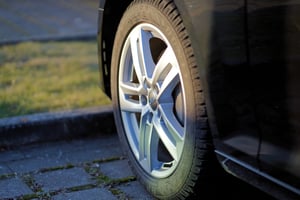Tires continue to be the second highest maintenance cost for fleets, just behind fuel. Yet the...
Younger tire consumers looking for value, not OE
There’s a generational shift in the way Americans are buying tires, with younger consumers less committed to replacing tires with the original equipment brand.
According to the J.D. Power 2016 U.S. Original Equipment Tire Customer Satisfaction Study released late last month, young motorists are more receptive to tire brands that are less established in the U.S. market and they are therefore more likely to purchase them as replacement tires.
The annual study is based on responses from 31,977 original owners of 2014 or 2015 model-year vehicles.
The study found larger established tire brands, like BFGoodrich, Bridgestone, Goodyear and Michelin, still had the highest consideration rates among all generations. However, Gen X consumers (born between 1965-1976) and Gen Y consumers (born between 1977 and 1994) were far more likely than those born in the Baby Boomers years of 1949 to 1964 or earlier to consider smaller or newer U.S. market brands like Cooper, Hankook and Pirelli when replacing OE tires on their vehicle.
Significantly, the study also found that 70 percent of Gen X and 72 percent of Gen Y vehicle owners switched tire brands if they replaced two or more tires — a far higher rate than for Baby Boomers (at 59 percent) or Pre-Boomers (61 percent).
J.D. Power global automotive division director Brent Gruber said: “Gen X and Gen Y are more receptive to the lesser-known brands in large part because those manufacturers have focused their marketing efforts on younger consumers. These consumers are increasingly looking at the value proposition, not just the cost or brand of the tire; if the perceived value is there, they’re willing to spend more or consider alternative brands.”
WHAT DOES THIS MEAN FOR THE TIRE INDUSTRY?
Gruber said given that the size of the U.S. passenger and light-truck tire market is nearly 300 million tires — and more than three-quarters of that comes from replacement tires — manufacturers cannot afford to ignore younger consumers. Gen Y and Gen X combined accounted for 53 percent of new-vehicle retail sales in 2015, up from 50 percent in 2014.
“The OE tire experience generates a lot of replacement tire sales, so it’s critical for manufacturers to ensure that they’re providing a positive experience and building future loyalty,” he said.
“There is a lot of business at stake, and tire manufacturers are faced with a large and growing younger customer base that isn’t necessarily as brand loyal as previous generations. The key to attracting and keeping younger customers is to demonstrate the value and performance of the tire.”
TIRE PERFORMANCE AND SATISFACTION
The study measured tire owner satisfaction in four vehicle segments: luxury, passenger car, performance sport and truck/utility. Satisfaction was examined in four measures of tires: wear, ride, appearance, and traction/handling.
The study found tire performance and satisfaction tended to decline as mileage accumulated on the tires, with satisfaction dropping sharply after 25,000 miles.
Only 25 percent of customers who experienced a wet traction problem with their tires said they “definitely will” or “probably will” recommend their tire brand to others, compared with 69 percent of those who had not experienced the problem.
SO HOW’D THE STUDY RANK THE BIG TIRE BRANDS?
Michelin ranked highest in three of the four segments: luxury, passenger car and truck/utility. Pirelli ranked highest in the performance sport segment. Here are the graphs:


Source: http://www.tractionnews.com
By: Daniel HatchPosted



